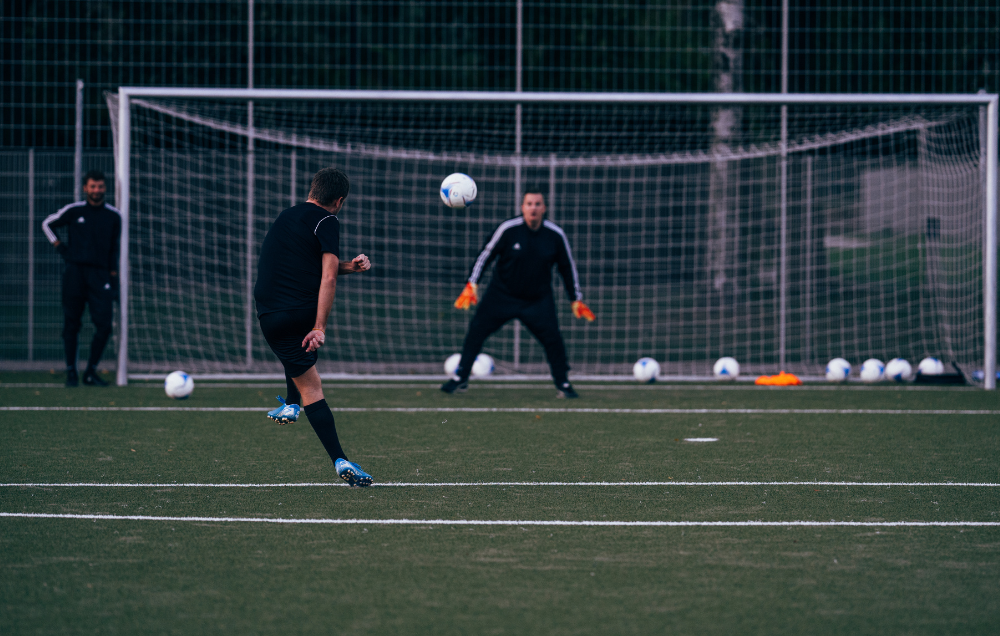Contents
It is the most wonderful time of the year! The holiday season is here, winter is in full swing and snow covers the ground. Before ending your day on the slopes with a warm cup of rich hot chocolate, there is plenty of preparation that goes into those invigorating glides down the mountain.
Our team at Lattimore Physical Therapy came up with five exercises to prevent the most common skiing and snowboarding injuries, which we have described in detail below.
-
Squats
Not only are legs the most utilized muscle group when skiing, they are also the most injured. A study conducted by the University of Canberra confirmed that the most common injuries that skiers face are found in the knees. Strengthening the muscle groups surrounding this area not only helps prevent injuries, but the added strength to the lower body will help with balance and improve your ability as a skier overall.
Squats can be done in a variety of ways, against the wall, with dumbbells, barbells, or even just with your own body weight. Sink your hips low, keeping your knees over your toes so that the quadriceps and glutes are used to power yourself back into a standing position.
-
Lunges
Similar to how you would push off of one ski at a time when moving on skis, lunges focus on one leg at a time. This isolates the muscle group in each leg which helps create a lot of strength and balance while also generating a lot of power to push off your skis with. Like squats, lunges can also be done in a variety of ways, including with dumbbells, barbells and body weight.
Start with both feet together with your toes pointing forward. Take a step forward while keeping your chest up and shoulders square while your knee is bent at a 90-degree angle while being parallel with your toes. Once in this position, with your back knee almost touching the ground, push off of your front foot to return to a standing position. Alternate legs for best results.
-
Split Squats
Split squats are a combination between lunges and squats. The exercise gets its name from the similar movement of a squat while the feet are in a lunge position. This is a popular exercise to perform using dumbbells in each hand or with a kettlebell being held with both hands chest-high. Split squats are a squat performed in a lunge position, with one foot in front and one foot stretched out in back, simply lower your knee to the floor and raise up back to standing position. While lunges alternate legs, split squats are done in the same position for the entire set.
Another variation of the split squat is to have one foot on the ground and the other elevated on a bench. Your shoelaces should be on the bench while your front foot is out in a lunge position. It is important to remember the technique in a split squat, as it is the same technique as a lunge. The knee should bend over the toes but not past the toes.
-
Romanian DeadLift (RDL)
The RDL is an excellent exercise for both strengthening and stretching the hamstrings, creating more mobility in the lower body which reduces the risk of pulling a muscle or ligament. RDLs can be performed with both feet on the ground, similar to a traditional deadlift, or by alternating legs.
When alternating legs, it is important to keep the leg on the ground firm and to try to keep it as straight as possible, with only a slight bend in the knee. Be sure to bend at the waist whether you are doing a one or two-leg RDL to avoid back injury.
-
Glute-Hamstring Raise (GHR)
GHRs are a popular way to rehabilitate injured hamstrings, but they are also an effective way to prevent those same pesky hamstrings from tightening up on the slopes. Hamstrings can be a very difficult muscle to recover from, as their main application is used when performing quick movements such as running or extending. That is, if you injure your hamstring and are walking, standing, or sitting, you may not feel pain until you attempt a sudden movement.
GHRs work best when performed with a partner. While kneeling, have your partner hold your feet down by grabbing the back of your ankles while you attempt to lower yourself all the way to the floor. Try to go as far as you can go without falling and then lift yourself back up using only your hamstrings. GHRs are very difficult to perform in full motion, but the challenge (and the health benefits) make it a fun and important exercise.
From our team at Lattimore Physical Therapy, enjoy the Holidays, the slopes, and be sure to stay safe on and off mountains!
The Lattimore Physical Therapy & Sports Rehabilitation Network was founded by Physical Therapists John and Cindy Shuman in 1992. Since then Lattimore has grown to 27 locations in 5 different counties. What’s unique about Lattimore is our patient experience. We tailor your 1:1 treatment around your individual needs, conditions, and goals. With us, you’re more than just a number. You’re a member of our local community and we’re invested in your success. Call 1–888-PT ROCHS to experience The Lattimore Way!





